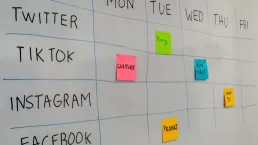You might have heard people talking about status codes before or you might be finding out about them for the first time, either way knowing what they are and what they mean for your website is crucial. Why? Status codes can help you solve problems, keep your website running smoothly and the sales coming in.
Don't forget, if you want to track the status of your key web pages, our PacgeMarshal page status tracking tool lets you do just that, sending you an alert when your pages are unavailable.
To help busy small business owners and digital marketers, we've pulled together a list of the common HTTP Status codes as a reference, if you experience one of these, then why not check out our guide on how to fix common website errors too.
What Are HTTP Status Codes?
Every time a browser (like Chrome, Firefox, or Safari) requests a page from a website, the web server responds with an HTTP status code. These three-digit numbers indicate whether the request was successful, redirected, or resulted in an error. Status codes fall into five main categories:
- 1xx – Informational: The request is in progress
- 2xx – Success: Everything is working as expected
- 3xx – Redirection: The page has moved somewhere else
- 4xx – Client Errors: The problem is on the visitor’s side
- 5xx – Server Errors: The issue is on the website’s server
More often than not, you and your potential customers will get a page loading without issue (and returning a 200 status code), but what if you get something else? Keep reading to find out more about each status code group and the individual codes.
1xx – Informational Responses
These are rare and usually don’t require attention. They indicate that a request has been received and is being processed.
100 Continue
The server received part of the request and is waiting for the rest.
101 Switching Protocols
The client has requested a change in communication protocol, and the server agrees.
Unless you’re dealing with technical development, you likely won’t encounter these often.
2xx – Success Responses
These codes mean that everything is working fine.
200 OK
The request was successful, and the page loads as expected.
201 Created
A new resource (like a blog post or user account) has been successfully created.
204 No Content
The server processed the request, but there’s no new content to show.
If you see these, your website is operating smoothly!
3xx – Redirection Responses
These indicate that a page has moved or the browser needs to take additional steps.
301 Moved Permanently
The page has been permanently relocated to a new URL.
302 Found (Temporary Redirect)
The page is temporarily located somewhere else.
304 Not Modified
The browser already has the latest version of the page stored, so it doesn’t need to reload it.
4xx – Client Error Responses
These errors occur when the issue is on the visitor’s end—such as typing the wrong URL or lacking permission to view a page.
400 Bad Request
The server can’t understand the request due to a formatting issue.
401 Unauthorized
The user needs to log in or provide proper authentication.
403 Forbidden
The user is not allowed to access this page.
404 Not Found
The most famous error; the page doesn’t exist.
408 Request Timeout
The server didn’t receive a response in time.
5xx – Server Error Responses
These indicate a problem on the website’s end, typically related to server issues. If you or your customers begin to see these issues, then you should let your website developers know as they usually indicate an issue with the computers or code which run your website.
500 Internal Server Error
A general server error with no specific details.
502 Bad Gateway
The server is acting as a gateway but received an invalid response from another server.
503 Service Unavailable
The server is overloaded or down for maintenance.
504 Gateway Timeout
The server didn’t respond in time.
HTTP Status Codes Can Help
You may know very little about HTTP status codes but understanding HTTP status codes can help you find and fix issues on your website. This might feel like another thing to do, but fixing issues early stops them mounting up and becoming a real blocker to the growth of a business.
Don't forget that website uptime monitoring software like PageMarshal can give you real time information about your page status codes.




